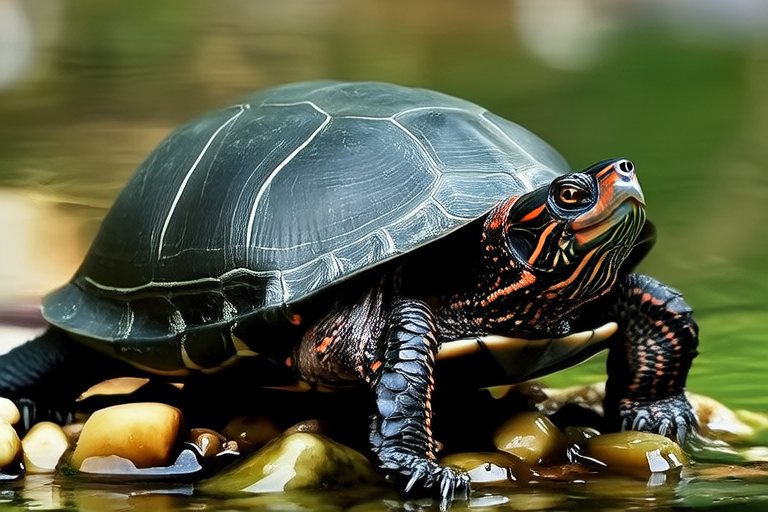Red-eared Slider Care: A Beginner’s Guide to Turtle Ownership
Welcome to the world of turtle ownership! Red-eared sliders (Trachemys scripta elegans) are one of the most popular pet turtles due to their vibrant colors and engaging personalities. However, before you dive into this rewarding hobby, it’s crucial to understand the responsibilities that come with owning these reptiles. This guide will walk you through everything you need to know about red-eared slider care, from setting up their habitat to providing proper nutrition and healthcare.
Understanding the Commitment
Owning a red-eared slider is a long-term commitment. These turtles can live upwards of 20 years or more, so make sure you’re prepared for the responsibility. Research thoroughly before making a decision. Understanding the needs of your pet will ensure a healthy and happy relationship for both of you.
Habitat Setup
Tank Size
The first step in creating a suitable habitat for your red-eared slider is choosing an appropriate tank. For a single adult slider, a tank that is at least 40 gallons is recommended. The rule of thumb is 10 gallons per inch of shell length for smaller turtles, increasing to 20 gallons per inch for larger ones. Ensure there is ample space for swimming, basking, and hiding.
Water Quality
Water quality is paramount for your turtle’s health. Use a dechlorinator to remove harmful chemicals from tap water. Regularly check the pH level, which should be between 6.5 and 8.0. Maintain a temperature gradient within the tank by placing a heater in one end while keeping the other cooler. This allows your turtle to regulate its body temperature.
Filtration
A good filter system is essential to keep the water clean. Look for a filter rated for a tank twice the size of your turtle’s enclosure. Filters should remove debris and control ammonia levels. Additionally, perform partial water changes weekly to maintain optimal conditions.
Diet and Nutrition
Proper nutrition is key to your turtle’s longevity and overall health. Red-eared sliders are omnivores, meaning they eat both plant matter and animal protein. As juveniles, they require a higher protein diet, but as adults, their diet shifts towards more vegetation.
Feeding Schedule
Feed your turtle every other day, offering as much food as they can consume in 15 minutes. Remove any uneaten food promptly to prevent contamination. A balanced diet includes commercial turtle pellets, fresh vegetables like leafy greens, and occasional treats such as earthworms or feeder fish.
Nutritional Needs
Vitamin D3 and calcium are particularly important for shell growth and bone development. Provide UVB lighting to help synthesize vitamin D3. Calcium supplements can be added to their diet if needed, especially during growth stages.
Healthcare Basics
Regular veterinary check-ups are vital for early detection of potential issues. Familiarize yourself with common health problems such as respiratory infections, shell rot, and parasites. Monitor your turtle for signs of illness, including lethargy, loss of appetite, or unusual behavior.
Preventative Measures
To minimize health risks, maintain cleanliness in their environment. Disinfect the tank periodically and replace any damaged equipment. Quarantine new turtles for at least a month before introducing them to established tanks to prevent disease transmission.
Common Behaviors
Red-eared sliders exhibit various behaviors that indicate their mood and well-being. Basking is a natural behavior where they soak up warmth and UV light. Swimming is another essential activity, allowing them to exercise and explore. Social interactions may occur when multiple turtles share a tank; however, monitor closely to avoid aggressive encounters.
Tips for Handling
Handling your turtle gently and infrequently is advisable. Wash your hands before and after each interaction to prevent the spread of germs. Support their body fully when holding them, ensuring their legs and tail aren’t pinched or crushed. Avoid grabbing them by the limbs or shell.
Conclusion
Owning a red-eared slider can be incredibly rewarding, but it requires dedication and knowledge. By understanding their specific needs regarding habitat, diet, healthcare, and handling, you set the stage for a fulfilling partnership. Remember, thorough preparation and ongoing commitment are crucial elements in providing the best life possible for your pet turtle.
